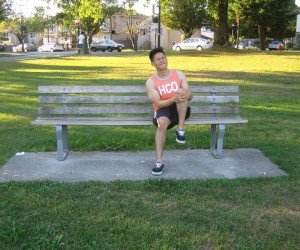A swollen knee develops when there is excessive accumulation of fluid in or around the joint of the knee which is also called effusion in the joint of the knee and this can also be called “water on the knee”.
[youtube url=”https://www.youtube.com/watch?v=Xj0-lT2knKw” width=”220″]A swollen knee can be due to trauma, overuse injuries and underlying conditions or diseases. By removing some of the accumulated fluids, it helps lessen stiffness and pain due to swelling. A knee swells due to injury on the ligaments, tendons and meniscus
Symptoms
- The knee is difficult to bend or straighten due to the accumulation of fluids in the joint.
- The skin surrounding the kneecap is evidently swollen
- Difficulty bearing weight on the affected knee due to the accumulation of fluid that triggers severe pain
Causes

- Cartilage or meniscus tears
- Tearing of the ligament especially the anterior cruciate ligament
- Fractures or broken bones
- Irritation due to overuse
- Conditions such as rheumatoid arthritis, osteoarthritis, infections, bursitis, gout, pseudogout, tumors and cysts can also lead to a swollen knee.
Treatment
- Rest the affected area and avoid weight-bearing as much as possible.
- Keep the knee elevated above the level of the heart while lying down or prop the knee and foot on a couple of pillows or on the arm of a couch.
- While lying down, keep the knee elevated above the level of the heart or prop the knee and foot on pillows or place the affected area on the arm of a couch.
- Use crutches if it causes pain when straightening the leg or putting weight on the affected area.
- Apply an ice pack on the affected knee for at least 15-20 minutes every 2-4 hours in order to help lessen the pain and swelling. If an ice pack is not available, you can use a frozen cold pack or bag of frozen vegetables.
- Avoid applying heat such as hot packs, hot showers and hot tubs if there is injury due to swollen knee for the first 48 hours.
- Wrap the knee using elastic compression bandage since it helps lessen the swelling of the area. Use an elastic bandage with a fastener so that there is no need for clips. Avoid wrapping the knee too tight in order to prevent stopping the circulation of blood in the area.
- Gently massage the area to promote an increase in the blood flow in the area. Avoid massaging the area if it causes pain.
- Take over-the-counter pain medications such acetaminophen or ibuprofen to lessen the pain in the knee.
Tips
- Perform some low-impact exercises such as water aerobics and swimming. It is vital to avoid continuous weight-bearing stress on the joints of the knee.
- Strengthen the muscles around the knee in order to help lessen the pressure placed on the joint.
- Maintain a healthy weight in order to minimize the wear-and-tear that can result to swollen knees.
